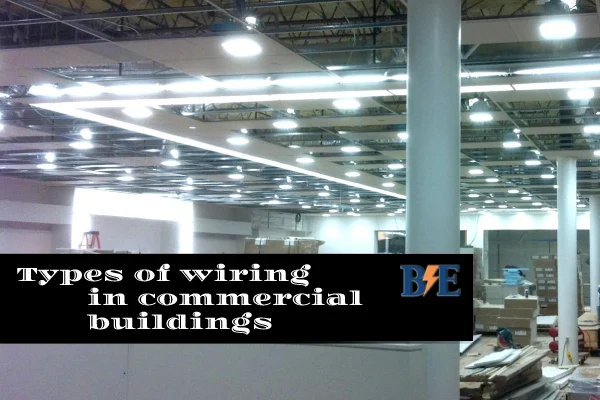Types of wiring in commercial buildings
Do you know the types of wiring in commercial buildings? Bond Electric experts as electrical services in Canada are with you in this article to know more about the types of wiring in commercial buildings.
Wiring systems in commercial buildings are complex and have different types depending on the size of the building and their functions are also different. In general, there are two types of wiring systems: centralized and decentralized.

Centralized wiring is used in large commercial buildings that require wiring for several types of equipment. For example, a mainframe computer system may require certain types of power to function properly. A centralized system uses one source for all electricity. This source can be solar panels, wind turbines or a generator.
Decentralized wiring is used in smaller structures such as offices or small shops. In this type of system, each room or area has its own power source that supplies electricity to that area only.
what type of wire is used in commercial buildings?
In this part of the article about the types of commercial building wiring, we want to see which types of wires are most commonly used in the electrical wiring of commercial buildings. So stay with us until the end of the article.
- Copper: Copper is the standard for residential and commercial wiring. It is a good, durable and cheap conductor.
- Aluminum: Aluminum wiring is used primarily in commercial buildings, but is also used in some homes. It is cheaper than copper and has good conductivity, but it can corrode more easily and may not last as long as copper.
- Fiber optic cable: Fiber optic cable looks like a regular wire with a small glass core inside. It is used to send signals from one point to another over long distances without loss of quality. The signals that travel through fiber optic cables are actually pulses of light that travel much faster than any electrical signal can travel through ordinary wires. Fiber optic cables are also one of the types of wiring methods in commercial buildings.
- Power Line Carrier (PLC): Power line carrier systems use existing power lines to transmit data, much like cellular telephone systems do today (although this type of system uses FM radio waves instead of cellular signals). A PLC can be very reliable because it relies on existing infrastructure to do its job and has no moving parts like conventional wires.

Also, different types of wiring are used in commercial buildings, and the type of wiring depends on the type of building and its purpose:
CAT5 and CAT6
CAT5 and CAT6 are two types of wire that are used to transmit information, which can be used for telephone lines or computer networks, which can be used for wiring commercial buildings.
These wires are thin and flexible enough to pass through walls, making them ideal for multi-story commercial buildings.
They can also support a lot of bandwidth, so they can handle high-speed Internet connections and multiple video streams. Both types of wire are made of copper, but CAT6 has more shielding layers around each strand, making it more resistant to interference from electrical devices such as microwaves or fluorescent lighting fixtures.
Wiring requirements for commercial buildings
In the continuation of the topic of getting to know the types of wiring in commercial buildings, we would like to talk about the requirements of wiring in commercial buildings.
Complying with the wiring requirements of commercial buildings is more difficult than residential buildings. This is because commercial buildings are designed to be occupied by a large number of people at any one time, so they must be built in such a way that people can safely use electricity and lighting systems without Damaged or killed.
The National Electrical Code (NEC) is the standard for wiring requirements for commercial buildings. It is a set of regulations that explain how to properly install and maintain electrical equipment, as well as how to safely connect circuits to each other. The NEC was updated in 2011 and has been revised periodically since its inception in 1897.

To pass inspection, your commercial building must have all required electrical outlets installed according to code, and they must all be properly and securely connected, meaning no loose wires or exposed wires. All wiring must be installed in accordance with the relevant sections of the NEC.
Three types of outlets are required for wiring commercial buildings: outlets, switches, and lighting fixtures. An outlet is an outlet that allows you to plug in small appliances such as lamps or fans. A switch controls the flow of electricity through your home’s lights, and as a light fixture, includes any lamp or ceiling light.
The important thing is to consult with experts in this field before installing and operating the wiring of your commercial building so that the said commercial building does not face any problems in the future.
You can contact the experts of Bond Electric in Canada and ask your questions in this field.
We hope that by reading this article, you have gained useful information about the types of wiring in commercial buildings. Recommend us to your friends and we will also be happy to know your opinions.
